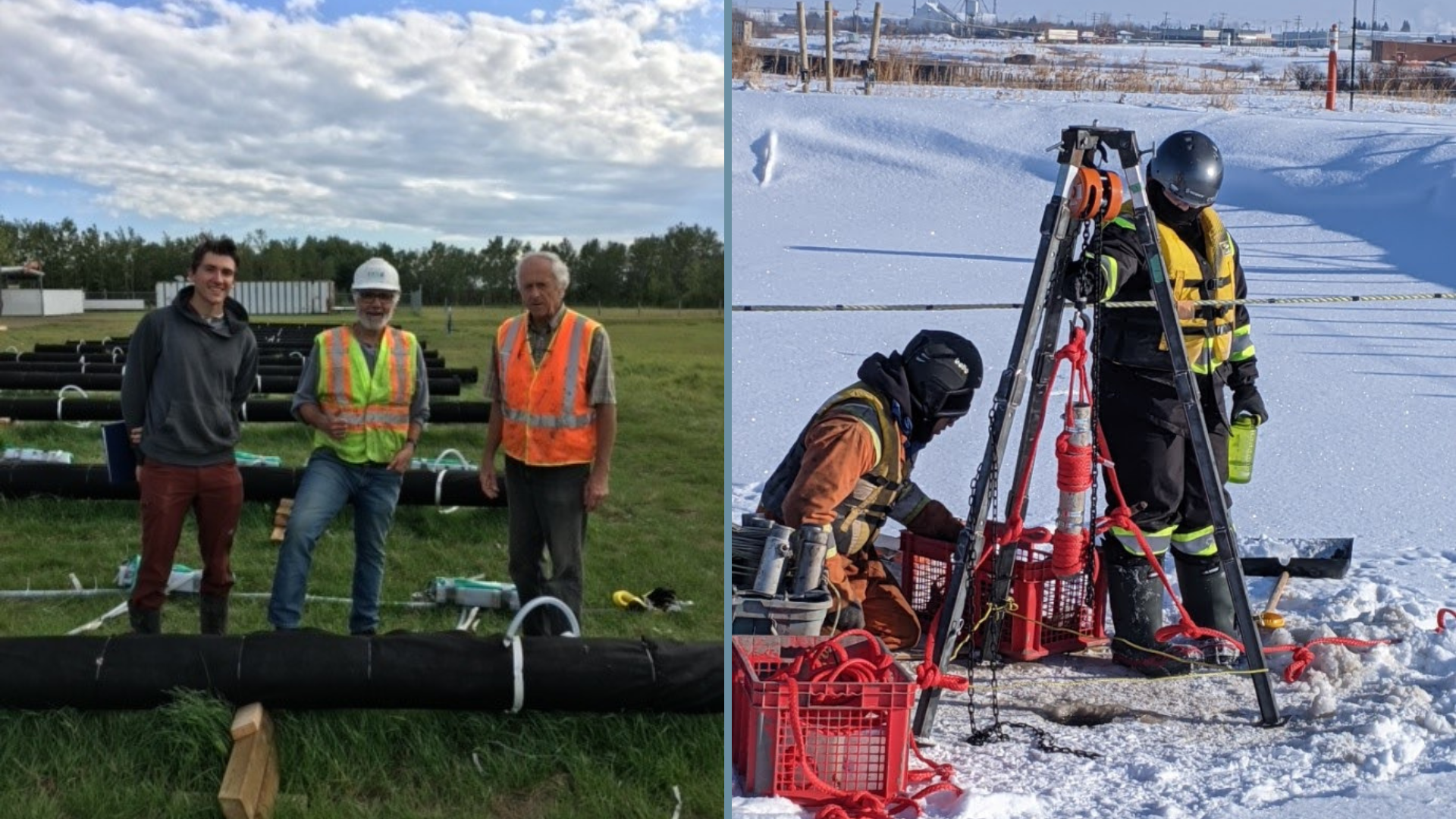With support from the Ontario Water Consortium’s Water Industry Growth Program, ElectroKinetic Solutions Inc. is revolutionizing tailings management within the mining industry through its pioneering dewatering technology.
Tailings are a massive challenge for the mining industry. Decades are required for suspended particles to settle and form a slurry, preventing water reuse. Companies are forced to construct enormous tailings storage facilities (TSF) or to dewater the slurry in the processing plant — an expensive undertaking.
ElectroKinetic Solutions Inc. (EKS) has developed a different approach, innovating a dewatering technology that speeds up dewatering in TSFs. The EKS Technology has been proven in field tests in Alberta’s oil sands and now, funding from OWC’s Water Industry Growth (WIG) program is facilitating scale up.
Electrifying field results
The EKS Technology employs electrokinetic forces: the movement of electrically charged particles towards electrodes. The idea is simple: cathodes are suspended by floats with anodes suspended a few metres beneath in the tailings. Electricity is applied creating an electric field. The current pulls suspended particles down towards the anodes via electrophoresis.
Meanwhile, electroosmosis pulls water up towards the cathodes, allowing recovery and reuse. “Once the released water is recovered, more space is available to deposit tailings,” says John Vandersleen, senior manager of technology development at EKS. “Mining companies are able to postpone the cost of expanding facilities while reducing significantly demand for make-up water.”
In 2019, the EKS Technology was demonstrated at a commercial scale in a custom-built test cell at Vegreville, Alberta. The test cell was filled with 1,700 cubic metres of oil sands tailings. The 18-month project proved a huge success, releasing 1,100 cubic metres of water and achieving all performance metrics set by industry and government funders.
Following the field demonstration, EKS has focussed on international mining operations. After being selected as the most promising new tailings management innovation at the 2021 PERUMIN Hub Innovation Challenge, held in Peru, the EKS Technology attracted much interest in South America, Australia and Europe.
Scaling up to full-size facilities
But before buying in fully, mining companies wanted to see proof that the EKS Technology will work at the scale of commercial TSFs that are multiple kilometers in width and length and often over 50 m in depth. So the EKS team set about upsizing.
“At a commercial scale, we’re using the same approach used for the field demonstration. The commercial installations are building out from that design.” says Vandersleen. “Instead of having ten electrode pairs, we’re having 200 or more. And instead of the electrodes being 10 metres long, they’re up to 500 metres.”
The basic technology remains the same, but there are design details. Each installation is custom fit to the needs of the mining company.
For help, EKS turned to the WIG program. WIG funding has enabled experimentation with different electrode materials having a longer functional life, while minimizing costs. Power demand is also being optimized to reduce operating costs. The design of the flotation system is being tweaked to ensure the desired position of the electrodes is maintained during the dewatering process.
“We’re adding tools to our design toolbox so that the design of these commercial systems will be more efficient and reliable,” says Vandersleen.
EKS aims to have tested prototypes of their system by the end of March 2024 so that they can move ahead on their design contracts with two South American companies.
According to Vandersleen, OWC support has been pivotal for successful commercialisation. “WIG funding has enabled us to accelerate the research needed to support that design of commercial installations,” he says. “Speed and continual research and innovation are keys to success with new technologies.”
Delivering big benefits to the mining sector
Vandersleen predicts rapid uptake once the first full-scale installation is successfully up and running, confirming to the many economic and environmental advantages of their system. “No other technology can do what we can do,” he says.
For starters, the EKS Technology offers much flexibility. The design of each system is unique and is optimized for the type of tailings and the mining company’s dewatering rate, cost and energy use priorities. “We tailor the technology to satisfy a client’s needs,” Vandersleen explains.
Environmentally, the EKS Technology reduces freshwater demand and increases the volume of water recovered and reused, while shrinking the footprint of tailings storage facilities. And the technology can be powered by solar panels floating above the electrodes, eliminating greenhouse gas emissions and enabling operations in remote locations off the grid.
Then there are the cost savings. One study EKS completed for a European mining company estimated a 36 per cent rate of return on its investment in the EKS Technology. Another study for a South American operation concluded that installing their system would avoid $450 million in construction costs.
It all adds up to powerful incentives to use a made-in-Canada dewatering solution — and a bright future for ElectroKinetic Solutions.
WIG supports industry innovations that accelerate growth, create jobs and strengthen Ontario’s water sector. For more information, click here.
OWC’s Innovation Showcase aims to highlight cutting-edge advancements and breakthrough technologies of Southern Ontario companies that address the pressing challenges and opportunities in the water sector – View EKS’ Showcase


